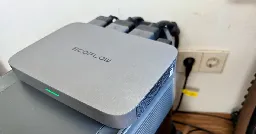With self-install solar panels, and a €150 plug-in adapter that feeds power directly into electricity sockets; a DIY home power system is becoming popular in Europe.
With self-install solar panels, and a €150 plug-in adapter that feeds power directly into electricity sockets; a DIY home power system is becoming popular in Europe.

www.theverge.com
EcoFlow’s $200 PowerStream is so clever, you might buy a $4,000 solar generator

